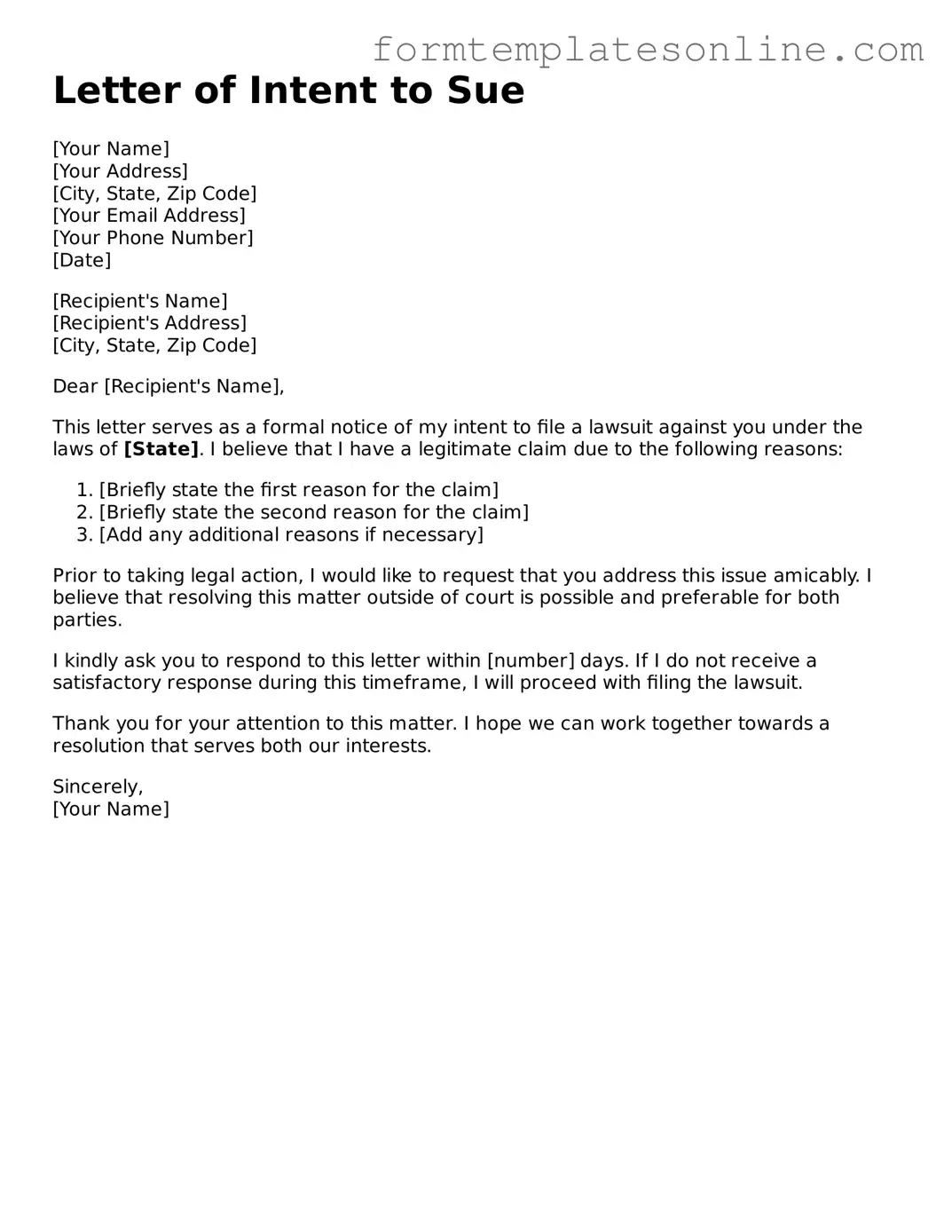What is a Letter of Intent to Sue?
A Letter of Intent to Sue is a formal document that notifies another party of your intention to file a lawsuit against them. This letter outlines the grievances you have and serves as a warning, giving the recipient an opportunity to resolve the issue before legal action is taken. It can help in negotiating a settlement and may also be required in some jurisdictions before proceeding with a lawsuit.
When should I send a Letter of Intent to Sue?
Consider sending this letter when you believe you have a valid legal claim against someone, and you want to prompt them to address the issue. It’s particularly useful if previous attempts to resolve the matter amicably have failed. Sending this letter can demonstrate your seriousness and may encourage the other party to engage in discussions to settle the dispute.
What should be included in a Letter of Intent to Sue?
Your letter should include specific details about the dispute, such as the nature of the complaint, the parties involved, and any relevant dates. Clearly state your demands or what you hope to achieve. Additionally, it’s wise to mention any evidence that supports your claim. Be sure to include a deadline for the recipient to respond, as this creates a sense of urgency.
Is a Letter of Intent to Sue legally binding?
No, a Letter of Intent to Sue is not legally binding. It serves as a notification and an opportunity for resolution rather than a formal legal document. However, it can be an important step in the legal process. If the matter escalates to court, this letter may be referenced to show that you attempted to resolve the issue before taking legal action.
Can I send a Letter of Intent to Sue without a lawyer?
Yes, you can draft and send a Letter of Intent to Sue without a lawyer. However, it is often beneficial to consult with a legal professional to ensure that your letter is appropriately worded and contains all necessary details. A lawyer can also help you understand your rights and the potential outcomes of your situation.
What happens after I send the Letter of Intent to Sue?
After sending the letter, the recipient will have a chance to respond. They may choose to settle the matter, negotiate further, or ignore the letter. If they do not respond or if a resolution is not reached, you may proceed with filing a lawsuit. Keep in mind that the response time you set in the letter is important, as it establishes a timeline for the next steps.
How can I ensure my Letter of Intent to Sue is effective?
To make your letter effective, be clear and concise. Use a professional tone and avoid emotional language. Stick to the facts and provide evidence to support your claims. Make sure to follow up if you do not receive a response by the deadline you set. This shows that you are serious about your intentions and are prepared to take further action if necessary.
What should I do if I receive a response to my Letter of Intent to Sue?
Carefully review the response. If the other party is open to negotiation, consider discussing possible solutions. If they deny your claims or refuse to settle, you may need to consult a lawyer to discuss your next steps. Depending on the situation, you can either attempt further negotiation or prepare to file a lawsuit.
